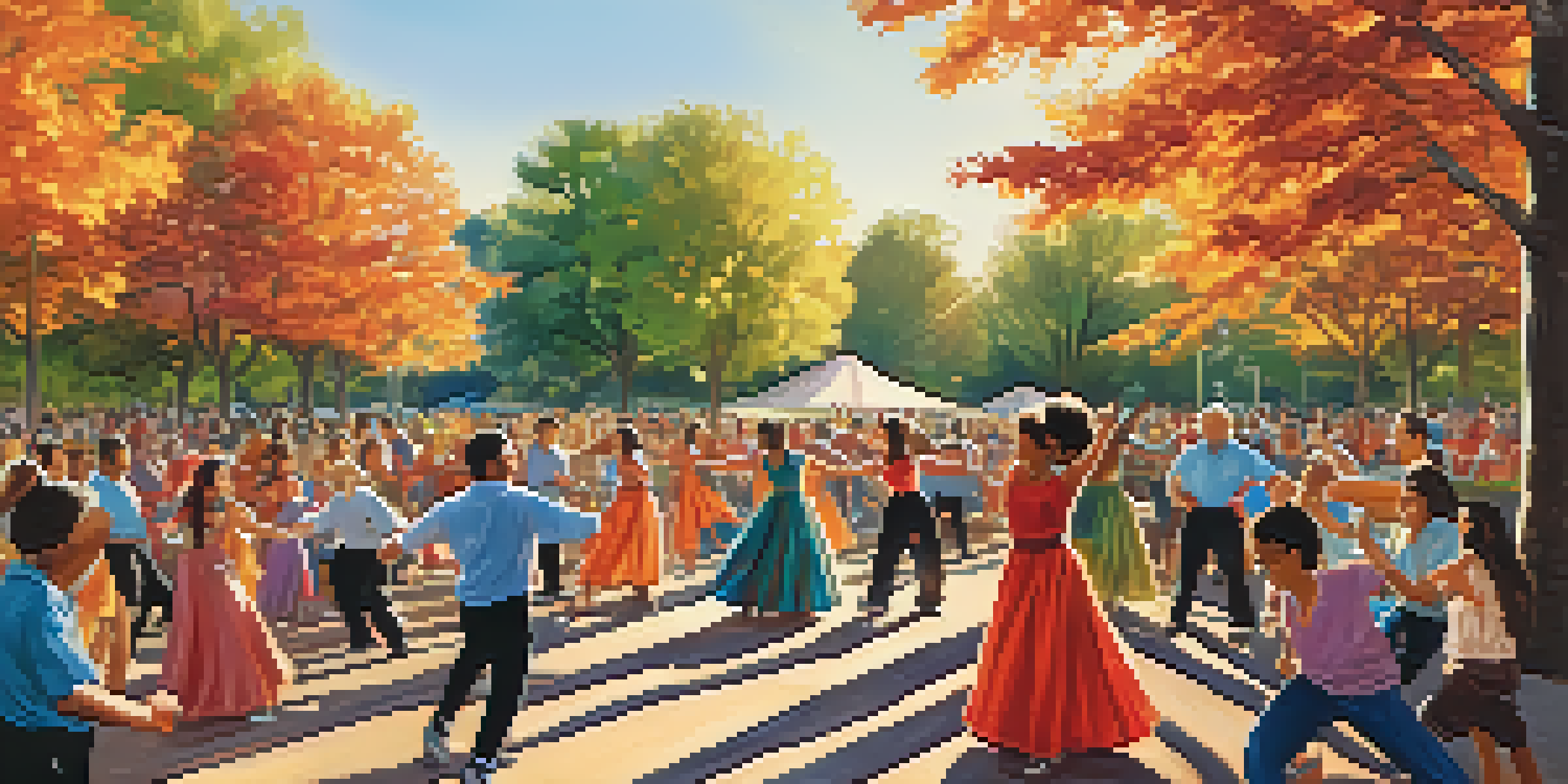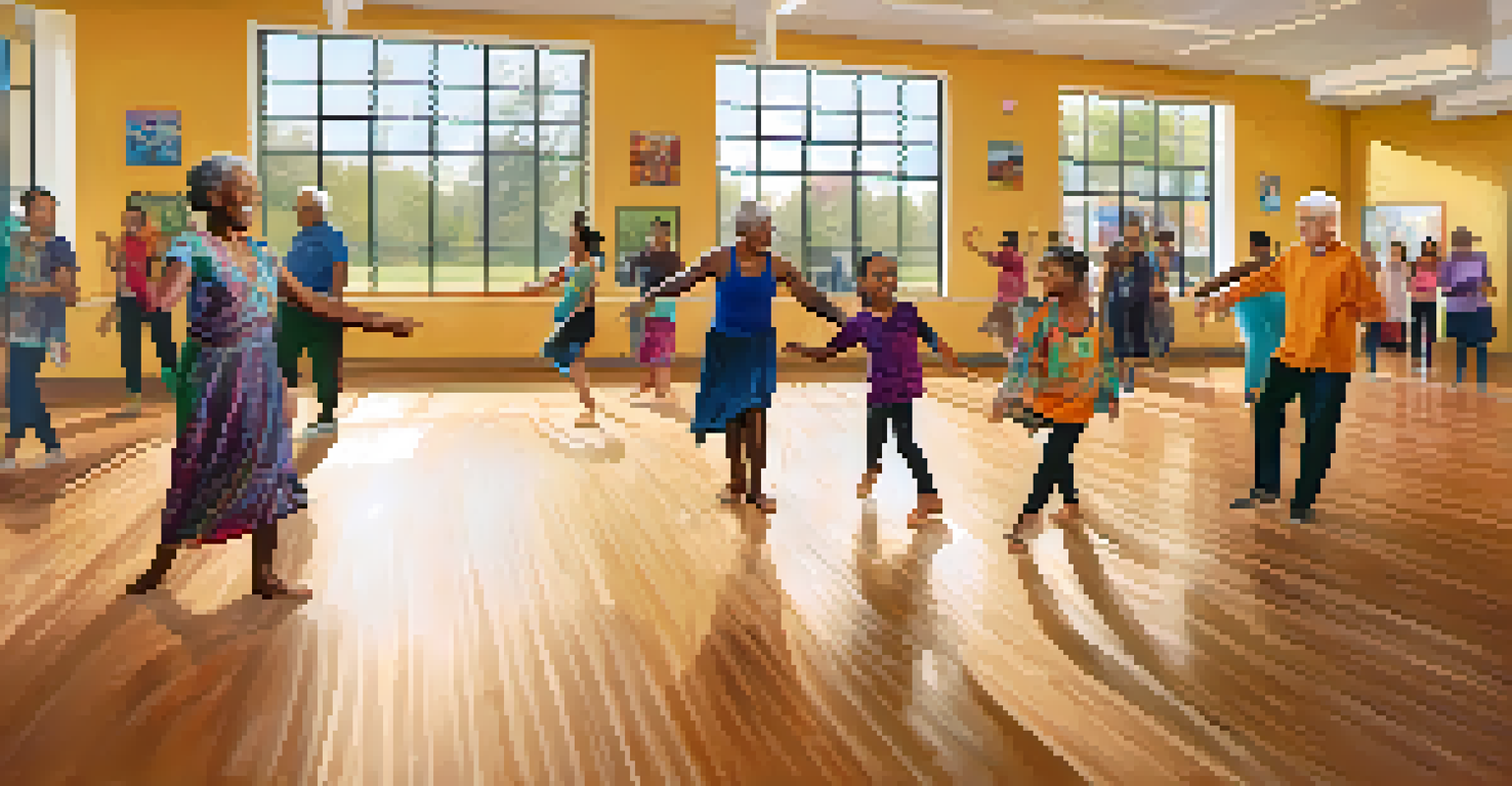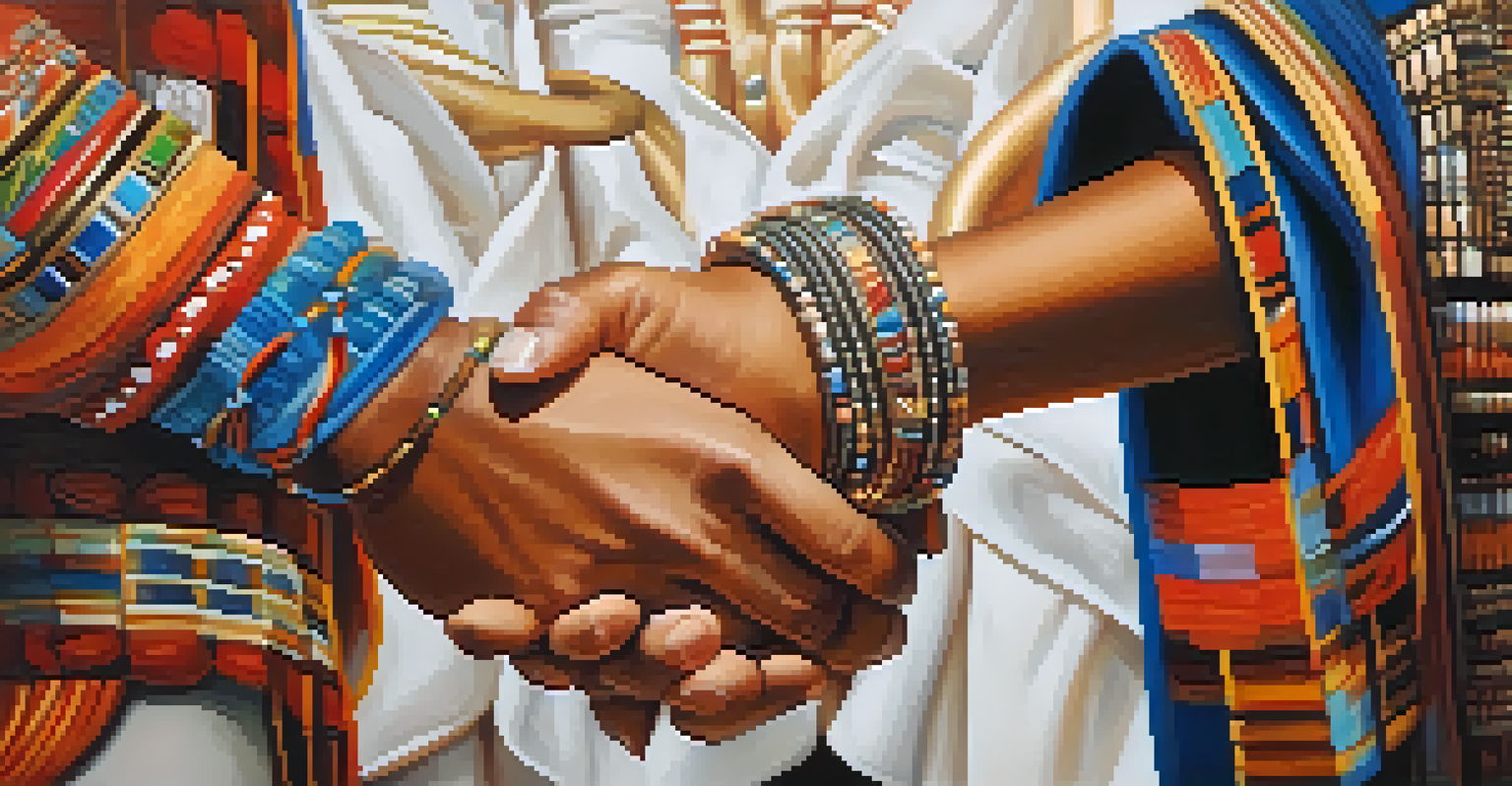Intergenerational Dance: Teaching Tradition Through Movement

The Power of Dance in Cultural Transmission
Dance has long been an essential form of expression, transcending time and cultures. It's a vibrant medium through which stories, values, and traditions are passed down from one generation to the next. By engaging in dance, individuals become part of a living history that celebrates their roots and identity.
Dance is the hidden language of the soul.
For instance, traditional dance forms often incorporate movements and rhythms that symbolize historical events or everyday life from the past. This connection to heritage fosters a sense of belonging and pride, especially among younger participants who learn about their ancestry through movement. When families dance together, they weave their histories into a shared narrative that's both personal and communal.
Moreover, these dance practices can help bridge generational gaps, allowing older and younger members to bond over shared experiences. By participating in dance, everyone—regardless of age—can learn from one another, enriching their understanding of cultural heritage while building lasting relationships.
Benefits of Intergenerational Dance Programs
Intergenerational dance programs offer a wealth of benefits for participants of all ages. They create a space where younger individuals can learn from the wisdom and experiences of their elders, while older generations can enjoy the vitality and creativity of youth. This reciprocal relationship fosters mutual respect and understanding.

For example, many community centers have started hosting dance workshops where grandparents and grandchildren can learn traditional folk dances together. Through this shared experience, participants not only enhance their physical health but also strengthen emotional ties within families. The joy of movement becomes a catalyst for deeper connections and conversations.
Dance Connects Generations
Intergenerational dance fosters bonds between ages, enabling shared experiences that promote understanding and respect.
Additionally, these programs can help combat social isolation among seniors, as they engage with younger dancers in a fun and supportive environment. By participating in dance, older adults can maintain their physical fitness while also enjoying the camaraderie of a multigenerational community.
Learning Through Movement: A Holistic Approach
Teaching dance involves more than just steps and rhythms; it's about conveying the stories behind those movements. In intergenerational settings, instructors can guide participants to explore the historical and cultural significance of each dance form. This holistic approach enriches the learning experience and makes the practice more meaningful.
The dance is a poem of which each movement is a word.
For example, when teaching a traditional Appalachian jig, instructors can share the dance's origins, the communities that developed it, and how it has evolved over time. Such knowledge encourages students to connect emotionally with the dance, enhancing their performance and appreciation of its cultural roots. It's a joyful way to keep traditions alive, as each dancer becomes a storyteller in their own right.
This interactive learning style also encourages creativity and improvisation, allowing participants to express their own interpretations of the movements. As dancers modify traditional steps or add their personal flair, they contribute to the ongoing evolution of the dance, ensuring that it remains relevant for future generations.
Creating a Welcoming Environment for All Ages
To truly embrace intergenerational dance, it's essential to foster an inclusive atmosphere where everyone feels welcome. Dance spaces should be designed with accessibility in mind, ensuring that participants of various ages and abilities can join in the fun. This might mean incorporating adaptive techniques or offering different levels of instruction.
For instance, when organizing a community dance event, consider ways to accommodate those with mobility challenges. Options could include seated dance activities or gentle movements that still allow everyone to participate. This inclusivity not only enhances the experience for all but also reinforces the idea that dance is for everyone, regardless of age or ability.
Music Enhances Dance Experience
The right music not only sets the mood for dance but also bridges generational gaps, sparking joy and storytelling.
Creating a welcoming environment also involves cultivating a culture of encouragement and support. By celebrating each dancer's contributions, whether they're a seasoned performer or a complete novice, you help elevate the experience and inspire confidence. Everyone should feel that their participation matters, adding to the rich tapestry of shared movement.
The Role of Music in Intergenerational Dance
Music is the heartbeat of dance, setting the mood and guiding movement. In intergenerational dance, the choice of music plays a crucial role in engaging participants and evoking memories. Familiar tunes from different eras can spark joy and nostalgia, creating a bridge between generations.
For example, playing classic songs from the '60s and '70s can bring back fond memories for older dancers while introducing younger participants to the sounds of the past. This musical connection often leads to spontaneous storytelling, where participants share personal anecdotes related to the songs. Such exchanges not only enhance the dance experience but also deepen intergenerational bonds.
Moreover, music can also be a tool for teaching rhythm and timing, making it easier for dancers to learn new steps. By incorporating a variety of musical genres, instructors can keep the energy high and ensure that every session feels fresh and exciting. This variety encourages dancers to explore different styles and cultures, enriching their overall appreciation of movement.
Celebrating Cultural Diversity Through Dance
Intergenerational dance is a fantastic way to celebrate cultural diversity within communities. By introducing various dance styles from around the world, participants can learn about different traditions and customs, fostering a greater appreciation for global cultures. This exposure can spark curiosity and encourage further exploration of these rich heritages.
For instance, a community dance festival might include performances from various cultural groups, showcasing everything from African drumming and dancing to traditional Asian folk dances. Such events not only entertain but also educate attendees about the significance of these dances, their history, and their relevance today. This shared cultural experience can create a sense of unity among diverse groups.
Cultural Diversity Through Dance
Intergenerational dance celebrates cultural diversity, allowing participants to explore and appreciate various traditions.
As participants engage with different dance forms, they also have the opportunity to collaborate and create hybrid styles that reflect their unique backgrounds. This blending of traditions encourages innovation while honoring the roots of each dance form. In this way, intergenerational dance becomes a dynamic space for cultural exchange and creativity.
The Future of Intergenerational Dance Initiatives
As we look to the future, intergenerational dance initiatives are poised to play an increasingly vital role in our communities. With growing awareness of the benefits of such programs, more organizations are likely to invest in dance as a means of fostering connections across age groups. This trend can lead to a richer tapestry of shared experiences and understanding.
Furthermore, the rise of technology can enhance these initiatives. Virtual dance classes, for example, can bring together participants from different locations, allowing families to dance together even when they are apart. These digital platforms can also provide access to a broader range of cultural dance forms, making it easier for people to explore and learn.

Ultimately, the future of intergenerational dance lies in its ability to adapt and evolve while remaining rooted in tradition. By continuing to celebrate and honor the stories behind the movements, we can ensure that dance remains a vital part of our cultural identity, connecting generations and enriching lives for years to come.